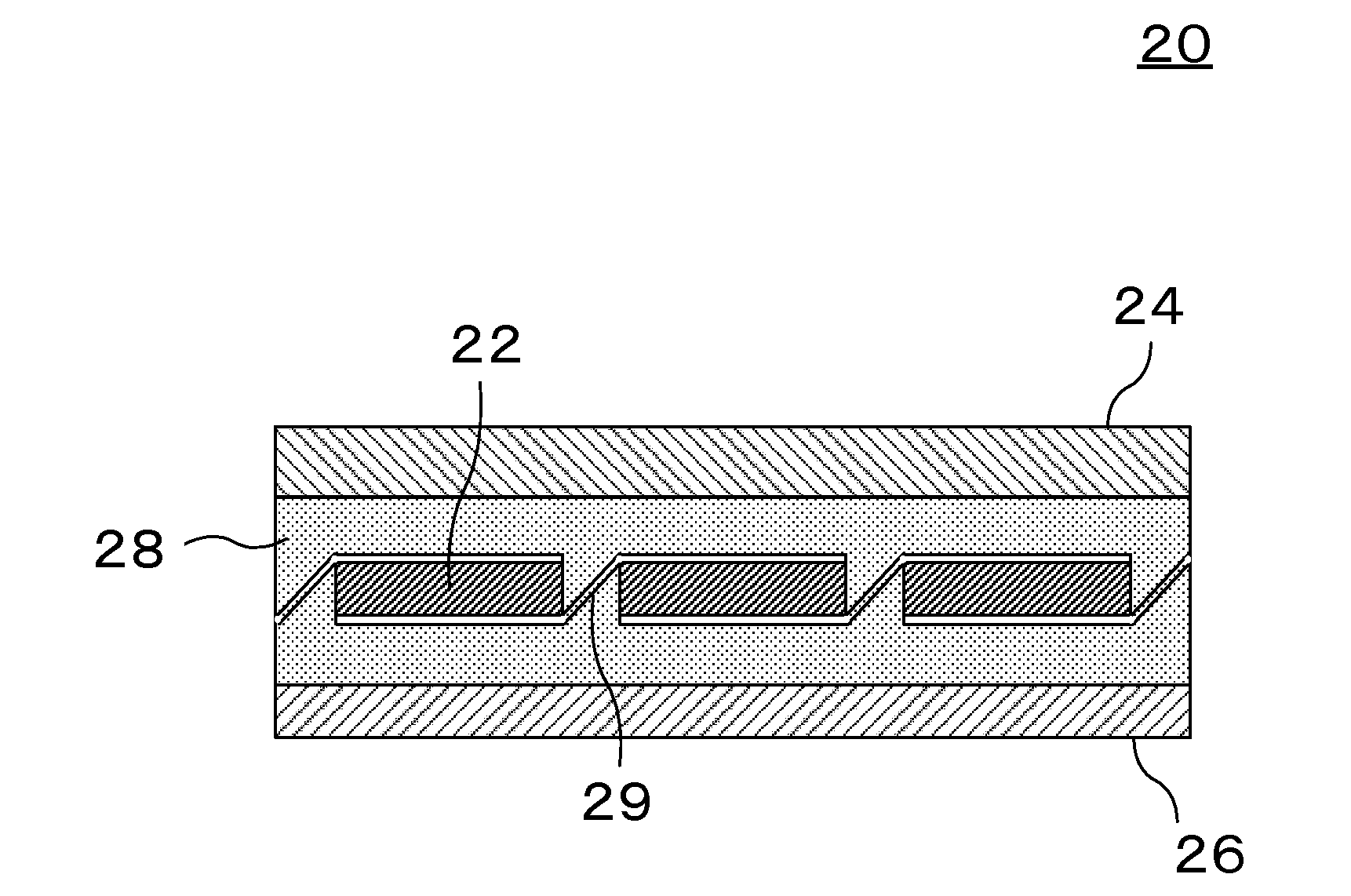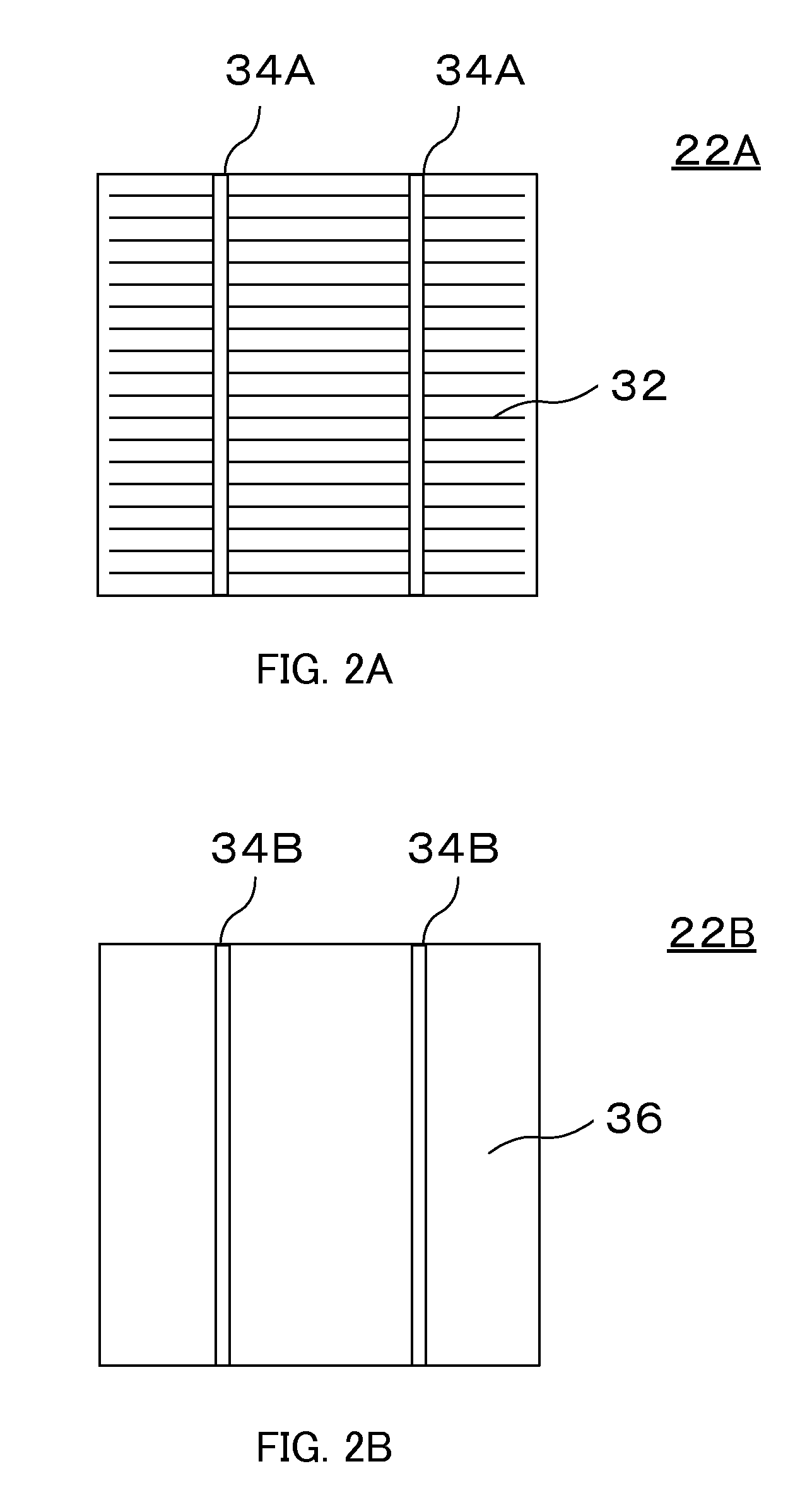Solar-cell sealant and solar-cell module using same
a solar cell and sealant technology, applied in the field of solar cell sealants, can solve problems such as possible negative impacts of acetic acid on solar cells, and achieve the effects of avoiding problems such as deformation of encapsulants, good balance, and superior characteristics
- Summary
- Abstract
- Description
- Claims
- Application Information
AI Technical Summary
Benefits of technology
Problems solved by technology
Method used
Image
Examples
synthesis example 1
[0384]A 2,000-ml polymerization device fully purged with nitrogen gas was charged with 1,000 ml of dry hexane, 2 ml of 5-vinyl-2-norbornene (VNB), and 0.3 mmol of triisobutylaluminum. After raising the internal temperature of the polymerization device to 80° C., hydrogen (5 NmL) was introduced. Propylene was supplied into the polymerization device so that the system pressure was raised to 0.25 MPa. Subsequently, ethylene was supplied into the polymerization device so that the system pressure was 0.8 MPa. A hexane solution containing 0.001 mmol of (t-butylamide)dimethyl(tetramethyl-η5-cyclopentadienyl)silane titaniumdichloride and 0.005 mml of triphenylcarbenium(tetrakispentafluorophenyl)borate was added in the polymerization device. With maintaining the internal temperature of the polymerization device at 80° C. and system pressure at 0.8 MPa, polymerization was allowed to take place for 10 minutes. Polymerization reactions were quenched by the addition of 2 ml methanol. After the p...
synthesis example 4
[0386]An ethylene / α-olefin / non-conjugated polyene copolymer was prepared under the same condition as that in Synthesis Example 1 except that (i) 5-vinyl-2-norbornene (VNB) was replaced by 25 ml of 5-ethylidene-2-norbornene (ENB), (ii) the propylene pressure was set to 0.33 MPa, (iii) hydrogen (5 Nml) was used, (iv) (t-butylamide)dimethyl(tetramethyl-η5-cyclopentadienyl)silane titaniumdichloride was replaced by diphenylmethylene(cyclopentadienyl)(fluorenyl) zirconium dichloride, (v) triphenylcarbenium(tetrakispentafluorophenyl)borate was replaced by 0.5 mmol of methyl aluminoxane in toluene, and (vi) 0.5 mmol of triisobutylaluminum was used. Physical properties of the ethylene / α-olefin / non-conjugated polyene copolymer are set forth in Table 1.
synthesis example 7
[0387]An ethylene / α-olefin / non-conjugated polyene copolymer was prepared under the same condition as that in Synthesis Example 4 except that (i) 5-ethylidene-2-norbornene (ENB) was replaced by 2.5 ml of 5-vinyl-2-norbornene (VNB), (ii) propylene pressure was set to 0.28 MPa, and (iii) hydrogen (1 Nml) was used. Physical properties of the ethylene / α-olefin / non-conjugated polyene copolymer are set forth in Table 1.
PUM
| Property | Measurement | Unit |
|---|---|---|
| Temperature | aaaaa | aaaaa |
| Temperature | aaaaa | aaaaa |
| Temperature | aaaaa | aaaaa |
Abstract
Description
Claims
Application Information
 Login to View More
Login to View More - R&D
- Intellectual Property
- Life Sciences
- Materials
- Tech Scout
- Unparalleled Data Quality
- Higher Quality Content
- 60% Fewer Hallucinations
Browse by: Latest US Patents, China's latest patents, Technical Efficacy Thesaurus, Application Domain, Technology Topic, Popular Technical Reports.
© 2025 PatSnap. All rights reserved.Legal|Privacy policy|Modern Slavery Act Transparency Statement|Sitemap|About US| Contact US: help@patsnap.com



